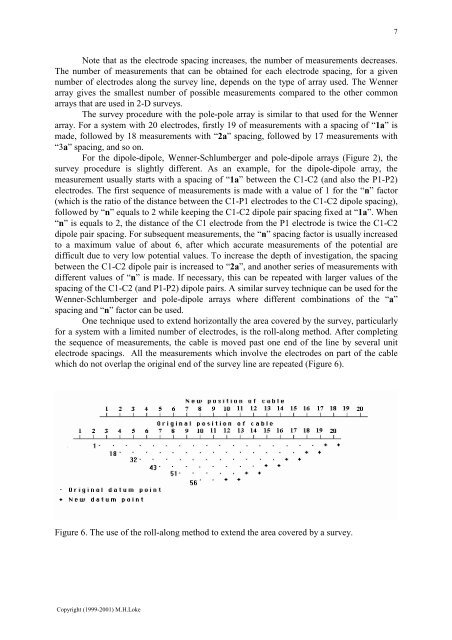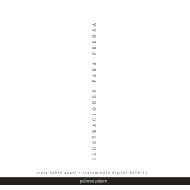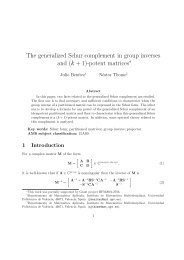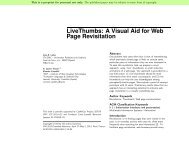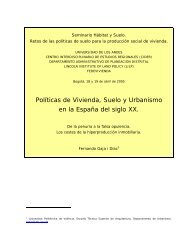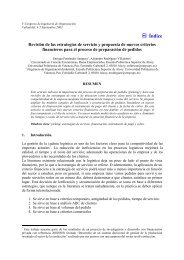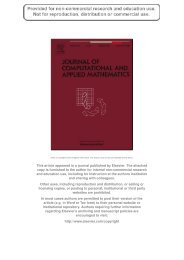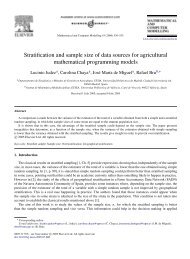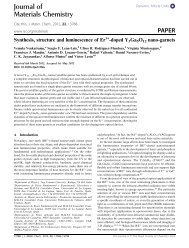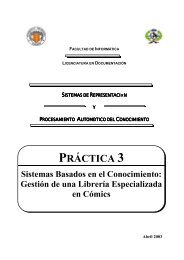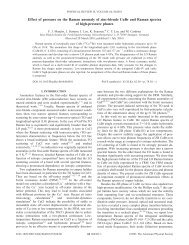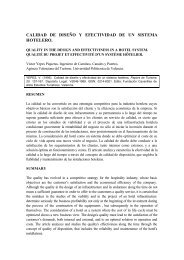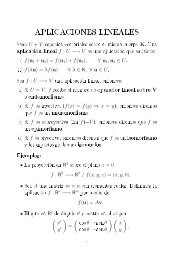Introduction to the resistivity surveying method. The resistivity of ...
Introduction to the resistivity surveying method. The resistivity of ...
Introduction to the resistivity surveying method. The resistivity of ...
You also want an ePaper? Increase the reach of your titles
YUMPU automatically turns print PDFs into web optimized ePapers that Google loves.
7<br />
Note that as <strong>the</strong> electrode spacing increases, <strong>the</strong> number <strong>of</strong> measurements decreases.<br />
<strong>The</strong> number <strong>of</strong> measurements that can be obtained for each electrode spacing, for a given<br />
number <strong>of</strong> electrodes along <strong>the</strong> survey line, depends on <strong>the</strong> type <strong>of</strong> array used. <strong>The</strong> Wenner<br />
array gives <strong>the</strong> smallest number <strong>of</strong> possible measurements compared <strong>to</strong> <strong>the</strong> o<strong>the</strong>r common<br />
arrays that are used in 2-D surveys.<br />
<strong>The</strong> survey procedure with <strong>the</strong> pole-pole array is similar <strong>to</strong> that used for <strong>the</strong> Wenner<br />
array. For a system with 20 electrodes, firstly 19 <strong>of</strong> measurements with a spacing <strong>of</strong> “1a” is<br />
made, followed by 18 measurements with “2a” spacing, followed by 17 measurements with<br />
“3a” spacing, and so on.<br />
For <strong>the</strong> dipole-dipole, Wenner-Schlumberger and pole-dipole arrays (Figure 2), <strong>the</strong><br />
survey procedure is slightly different. As an example, for <strong>the</strong> dipole-dipole array, <strong>the</strong><br />
measurement usually starts with a spacing <strong>of</strong> “1a” between <strong>the</strong> C1-C2 (and also <strong>the</strong> P1-P2)<br />
electrodes. <strong>The</strong> first sequence <strong>of</strong> measurements is made with a value <strong>of</strong> 1 for <strong>the</strong> “n” fac<strong>to</strong>r<br />
(which is <strong>the</strong> ratio <strong>of</strong> <strong>the</strong> distance between <strong>the</strong> C1-P1 electrodes <strong>to</strong> <strong>the</strong> C1-C2 dipole spacing),<br />
followed by “n” equals <strong>to</strong> 2 while keeping <strong>the</strong> C1-C2 dipole pair spacing fixed at “1a”. When<br />
“n” is equals <strong>to</strong> 2, <strong>the</strong> distance <strong>of</strong> <strong>the</strong> C1 electrode from <strong>the</strong> P1 electrode is twice <strong>the</strong> C1-C2<br />
dipole pair spacing. For subsequent measurements, <strong>the</strong> “n” spacing fac<strong>to</strong>r is usually increased<br />
<strong>to</strong> a maximum value <strong>of</strong> about 6, after which accurate measurements <strong>of</strong> <strong>the</strong> potential are<br />
difficult due <strong>to</strong> very low potential values. To increase <strong>the</strong> depth <strong>of</strong> investigation, <strong>the</strong> spacing<br />
between <strong>the</strong> C1-C2 dipole pair is increased <strong>to</strong> “2a”, and ano<strong>the</strong>r series <strong>of</strong> measurements with<br />
different values <strong>of</strong> “n” is made. If necessary, this can be repeated with larger values <strong>of</strong> <strong>the</strong><br />
spacing <strong>of</strong> <strong>the</strong> C1-C2 (and P1-P2) dipole pairs. A similar survey technique can be used for <strong>the</strong><br />
Wenner-Schlumberger and pole-dipole arrays where different combinations <strong>of</strong> <strong>the</strong> “a”<br />
spacing and “n” fac<strong>to</strong>r can be used.<br />
One technique used <strong>to</strong> extend horizontally <strong>the</strong> area covered by <strong>the</strong> survey, particularly<br />
for a system with a limited number <strong>of</strong> electrodes, is <strong>the</strong> roll-along <strong>method</strong>. After completing<br />
<strong>the</strong> sequence <strong>of</strong> measurements, <strong>the</strong> cable is moved past one end <strong>of</strong> <strong>the</strong> line by several unit<br />
electrode spacings. All <strong>the</strong> measurements which involve <strong>the</strong> electrodes on part <strong>of</strong> <strong>the</strong> cable<br />
which do not overlap <strong>the</strong> original end <strong>of</strong> <strong>the</strong> survey line are repeated (Figure 6).<br />
Figure 6. <strong>The</strong> use <strong>of</strong> <strong>the</strong> roll-along <strong>method</strong> <strong>to</strong> extend <strong>the</strong> area covered by a survey.<br />
Copyright (1999-2001) M.H.Loke


